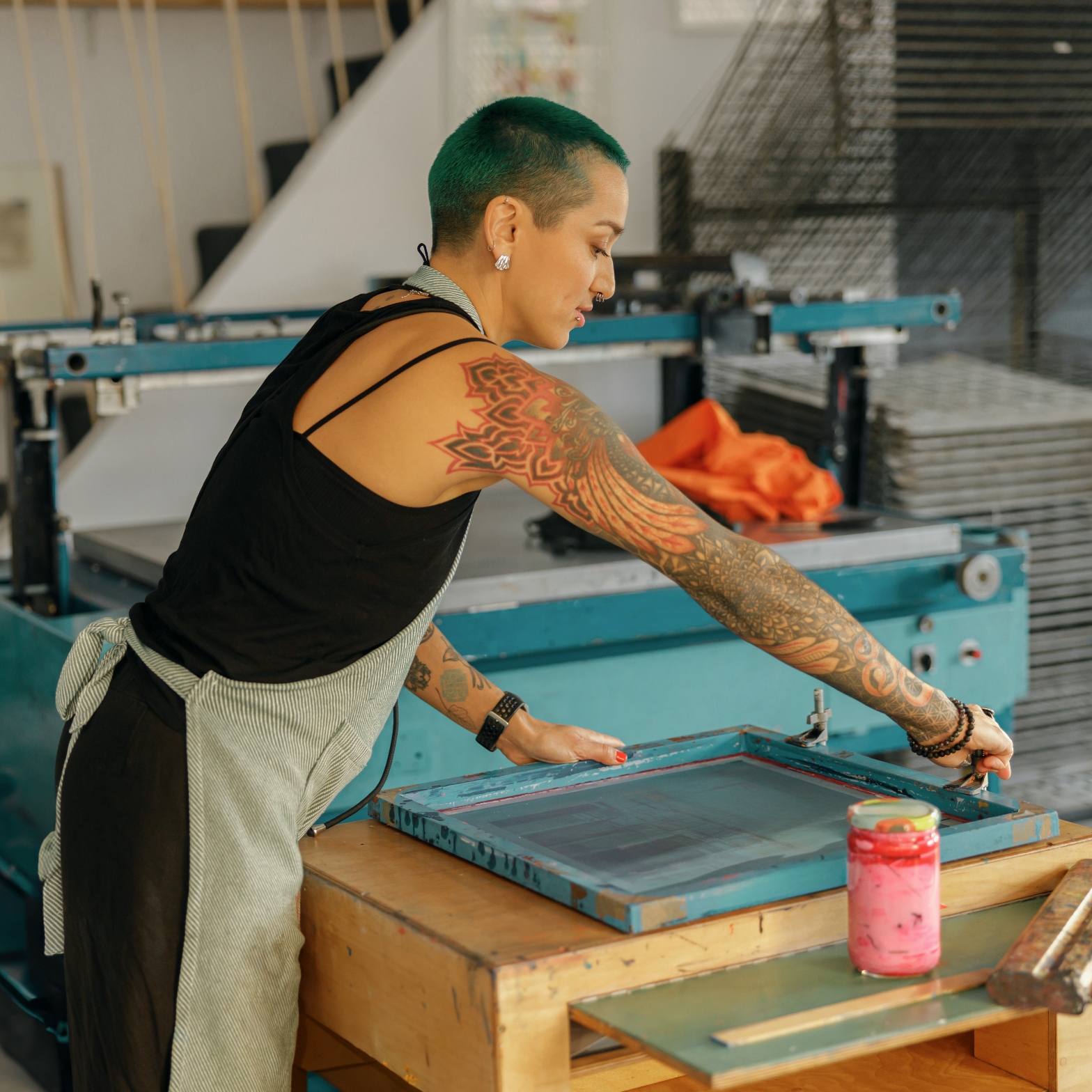Walk into any major auction house during contemporary art week. You'll see screen-printed works selling for premium prices.
This isn't about nostalgia or following trends. Screen printing offers technical advantages that digital methods can't match. Artists, collectors, and galleries recognize these qualities. That's why the medium keeps its prestige in fine art markets.
The Technical Edge of Screen Printing
Screen printing builds color through layers of ink. Each color needs its own screen. The ink sits on top of the paper instead of soaking in. This creates depth and texture you can actually see and feel.
Color and Ink Options
The process allows for opaque colors and specialty inks. Other methods can't reproduce these effects. Metallic finishes, fluorescent pigments, and textured inks give artists more options. A skilled screen printing shop in Philadelphia can produce effects that look flat when attempted digitally.
Color accuracy matters for art prints. Screen printing uses Pantone-matched inks mixed for each job. Digital printers rely on combinations of four base colors. This limits their range. Some blues, oranges, and greens don't translate well to digital.
Paper Quality Differences
The paper options differ, too. Screen printing works on thick, high-quality stocks that collectors prefer. Digital printers often need specific coated papers to prevent bleeding. This limits artistic choices.
Longevity That Collectors Trust
Art conservation studies show something interesting. Properly made screen prints last 100 years or more without fading. The ink chemistry differs from digital printing in important ways.
Screen printing inks are thicker and more stable. They resist UV damage better than inkjet pigments. Museums track this data carefully. The National Archives has documented preservation standards for various printing methods. Screen printing consistently outperforms newer technologies for archival purposes.
Digital prints fade faster, even with archival inks. Gallery owners know this. So do serious collectors. A screen print from the 1960s often looks vibrant today. Digital prints from 20 years ago frequently show color shifts.
This longevity affects market value. Auction records show screen prints holding their worth better over time. Collectors view them as safer investments compared to digitally reproduced art.
Authenticity and Limited-Edition Value
Screen printing carries built-in scarcity. Each print requires manual labor. The physical screens wear out after a certain number of impressions. This natural limitation makes edition sizes meaningful.
Artists sign and number screen prints because each one involves hands-on production. The screens, squeegees, and registration process mean no two prints are identical. Small variations in ink density and placement make each piece different.
Digital printing removed these natural constraints. Anyone can make unlimited identical copies with one button push. The ease of reproduction undermines the concept of limited editions.
Art market data reflects this difference. Here's what the numbers show:
- Screen-printed editions sell for 40-60% more than digital prints
- Galleries report stronger collector interest in screen-printed works
- The production method signals value to buyers
- Resale values remain more stable over time
Identifying Quality Screen-Printed Art
Several visual cues separate good screen prints from mass-produced posters. Check the ink surface first. Quality screen printing shows slight texture and density. The colors should look rich and saturated, not thin.
Physical Characteristics to Look For
Registration marks sometimes appear in margins. These small crosses or lines help align multiple color layers. Their presence indicates traditional production methods.
Paper quality matters a lot. Look for these signs:
- Thick cotton or cotton-blend stock
- Deckled or uneven edges
- Embossed studio marks or watermarks
- Slight variations between prints in the same edition
Artist Signatures and Edition Numbers
The artist's signature should be in pencil, not printed. Edition numbers appear as fractions like 15/50 written by hand. Some studios use blind stamps or chop marks pressed into the paper.
Professional Handling and Display
Screen prints need proper care to maintain their value. The ink sits on the paper surface. This makes it vulnerable to scratches and scuffs. Always handle prints by their edges. Wear clean cotton gloves.
Framing Best Practices
Framing choices affect long-term preservation. Use acid-free mats and backing boards. UV-protective glass blocks the light wavelengths that cause fading. Keep prints away from direct sunlight and heat sources.
Storage and Transportation
Storage matters for collectors building their holdings. Lay prints flat in archival boxes. Store them vertically in print drawers. Never roll screen prints. This can crack the ink layers. The Northeast Document Conservation Center offers guidelines for storing works on paper.
Transportation requires special attention. Professional art handlers understand these needs. They use proper materials and climate-controlled vehicles. Insurance values depend partly on condition. Protecting prints during shipping preserves their market value.
The Artist's Perspective
Professional printmakers choose screen printing for reasons beyond tradition. The medium offers creative control that digital methods don't provide. Artists can experiment with ink mixing, transparency, and layering effects.
The physical nature of the work matters. Many artists value the hands-on involvement of squeegee work and screen preparation. This connection to the process shows in the final product. Collectors notice and appreciate this human element.
Print studios maintain relationships with artists for years or decades. This collaboration produces consistent quality. Some shops become known for particular techniques or artistic approaches.
Cost factors play a role, too. Setup expenses are higher for screen printing. But per-unit costs drop for larger editions. This makes the process economical for runs of 50 to 500 prints. Artists can price their work appropriately while maintaining quality standards.
Market Position Today
Screen printing holds a strong market share despite digital competition. Gallery surveys show 70% of limited-edition prints sold use traditional methods. Collectors actively seek out screen-printed works when building their holdings.
New artists continue learning the craft. Art schools maintain screen printing facilities. Many graduates set up their own studios. The knowledge base stays current. Techniques keep evolving.
Contemporary artists push screen printing in new directions. This innovation keeps the medium relevant for current art movements.
